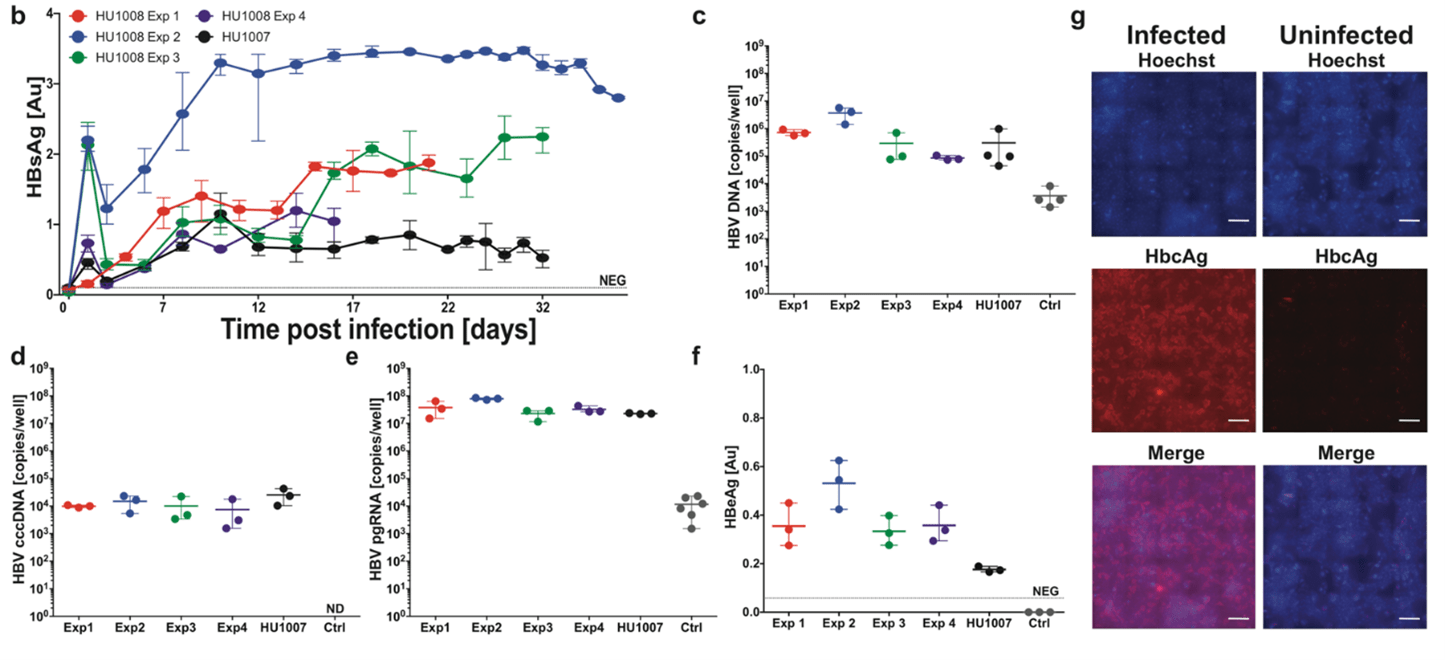Hepatitis B virus causes chronic infections in 250 million people worldwide. HBV cccDNA is responsible for the cause of persistent HBV infection and subsequent severe liver disease. Primary human hepatocyte (PHH) monocultures have been used as the gold standard in vitro method for studying HBV infections, yet this method is only able to reflect acute infection. Due to the lack of experimental systems that can recapitulate the chronic phase of infection, it has been difficult to generate antivirals that target cccDNA to cure chronic HBV.
PHH monocultures can be infected with HBV; however, long-term infections are not adequately mimicked using primary human hepatocytes due to their rapid differentiation and loss of characteristic hepatic functions. HUREL, a division of Visikol, has developed a long-term primary hepatocyte co-culture model to improve pharmaceutical drug trials and research. Self-assembling and micro-patterned primary human hepatocytes cocultures are effective to stabilize hepatic function.
The co-culture method developed by HUREL consists of primary hepatocytes and stromal cells. This method allows for high-throughput testing, maintains hepatocyte viability, and represents a physiologically relevant model.

Figure: Persistent HBV infection in HUREL micro liver cultures. Reprinted from “Long-term hepatitis B infection in a scalable hepatic co-culture system”, by Winer et al. 2017, Nature Communications.
In 2017, HUREL scientists published a study with Princeton University to analyze the use of co-cultures in long term infections in the journal Nature Communications “Long-term hepatitis B infection in scalable hepatic co-culture system.” In this study the scientists aimed to characterize HBV infections in self assembling primary human hepatocytes co-cultures (SACC-PHHs). The SACC-PHHs were exposed to various amounts of cell culture- derived HBV. They found that SACC-PHHs with pooled or single PHH donors support persistent infection with cell culture and patient derived HBV for more than 40 days; however, the PHH monocultures did not support persistent infection and were deteriorating by day 8. The scientists also analyzed the Hepatitis B surface antigen (HBsAg) in five single donor PHH lots to determine if this method was just as robust as using PHH pooled donors. They found that HBsAg was detectable shortly following inoculation and sustained for the remainder of the experiment. Both pooled and single donor SACC-PHHs had similar results. SACC-PHHs can be infected with patient-derived viruses, which can lead to the study of genetically diverse viruses. This data proves the use of SACC-PHH as a powerful tool to study HBV persistence and for assessments of host-targeting and directly acting antivirals.
Visikol and HUREL are dedicated to achieving our client’s goal in drug discovery. Contact us to work with our expert team of scientists.
